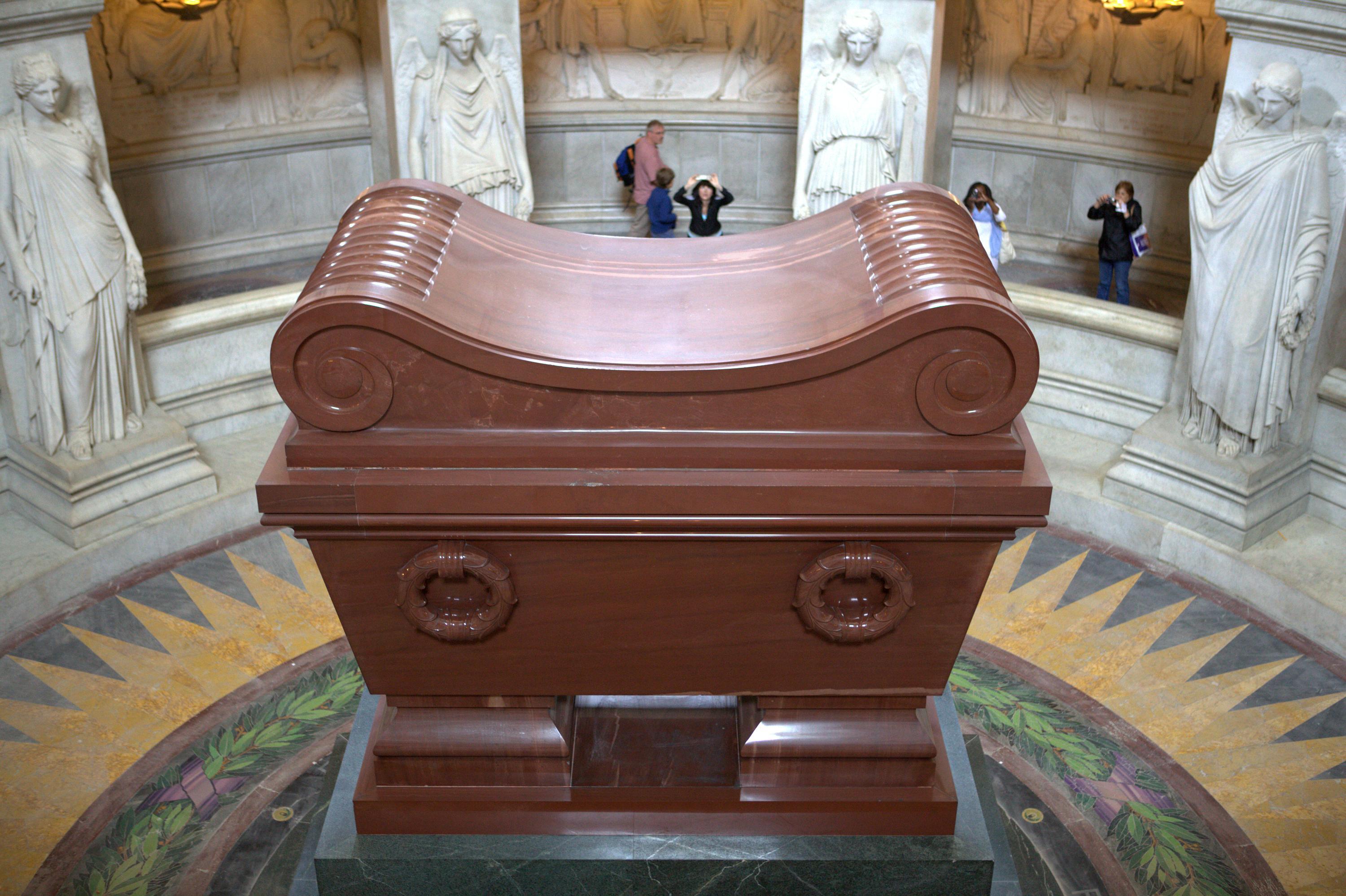Military history rules at this grandiose complex, which houses a military museum, church, tomb, hospital, and military ministries, among other things. Over the entryway, LUDOVICUS MAGNUS is inscribed in huge letters, in homage to the builder of this vast edifice, otherwise known as Louis XIV. Determined to create a home for soldiers wounded in the line of duty, Louis commissioned architect Libéral Bruant to design a monumental structure with formal gardens on what was then the outskirts of the city. The first war veterans arrived in 1674—between 4,000 and 5,000 soldiers would eventually move in, creating a minicity with its own governor. An on-site hospital was constructed for the severely wounded, which is still in service today.
As you cross the main gate, you’ll find yourself in a huge courtyard (102 x 207m, 335 x 207 ft.), the cour d’honneur, which was once the site of military parades. At the far end on the second story is a statue of “The Little Corporal” (Napoleon I) that once stood on top of the column in place Vendôme. The surrounding buildings house military administration offices and the Musée de l’Armée, one of the world’s largest military museums, with a vast collection of objects testifying to man’s capacity for self-destruction. The most impressive section is Arms and Armor, a panoply of 13th- to 17th-century weaponry. Viking swords, Burgundian battle axes, 14th-century blunderbusses, Balkan khandjars, Browning machine guns, engraved Renaissance serpentines, musketoons, grenadiers—if it can kill, it’s enshrined here. A huge wing covers the exploits of everyone from Louis XIV to Napoleon III, another on the two World Wars, where the centennial of WWI (1914–18) is being honored in a series of galleries dedicated to the Grand Guerre. Also on-site is the Musée des Plans et Reliefs, a somewhat dusty collection of scale models of fortresses and battlefields, and the Musée de l’Ordre de la Libération, which retraces the history of the Liberation (1940–45).
The Eglise des Soldats is actually the front half of the Eglise du Dôme, which was split in two when Napoleon’s tomb was installed under the dome. The “Soldier’s Church” is lovely and light-filled, decorated with magnificent chandeliers and a collection of flags of defeated enemies.
On the other side of the glass partition rests the Little Corporal himself. The Tomb of Napoléon lies under one of the most splendid domes in France. Designed by Hardouin-Mansart and constructed from 1679 to 1706, the interior soars 107m (351 ft.) up to a skylight, which illuminates a brilliantly colored cupola fresco by Charles de la Fosse. Ethereal light filters down to an opening in the center of the room, where you can look down on the huge porphyry sarcophagus, which holds the emperor’s remains, encased in five successive coffins (one tin, one mahogany, two lead, and one ebony). Surrounding the sarcophagus are the tombs of two of Napoleon’s brothers, his son, and several French military heroes. Don’t blame the over-the-top setting on Napoleon; the decision to transfer his remains to Paris was made in 1840, almost 20 years after his death. Tens of thousands of people crowded the streets to pay their respects as the coffin was carried under the Arc de Triomphe and down the Champs-Élysées to Les Invalides, where it waited another 20 years until the spectacular tomb was finished.







 About our rating system
About our rating system

1adb.jpg)
